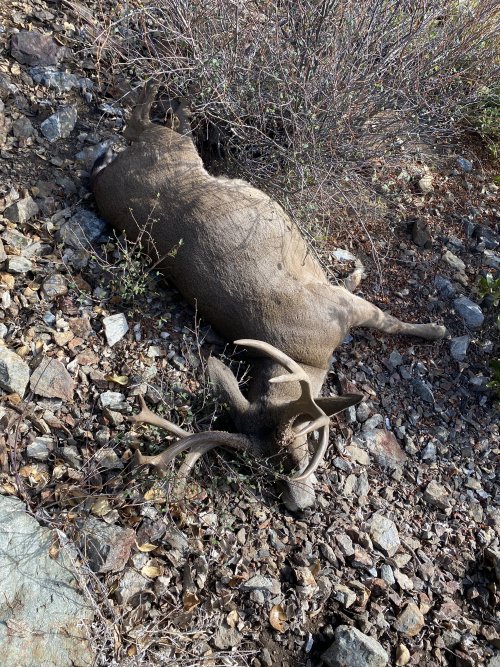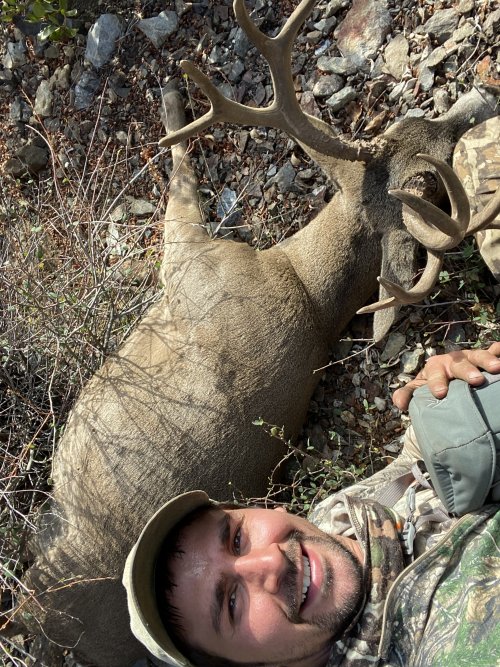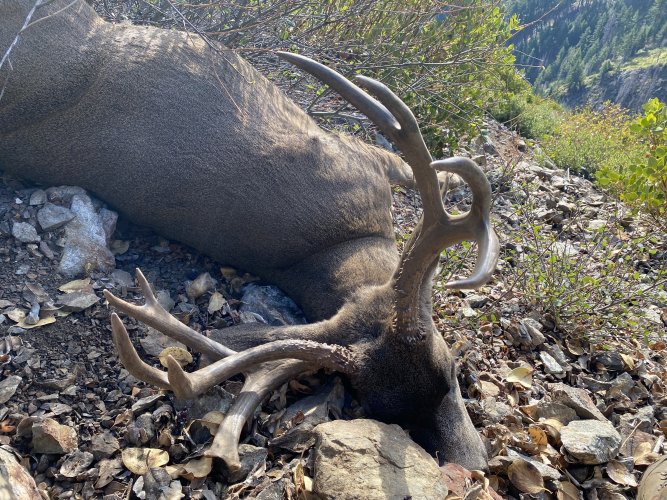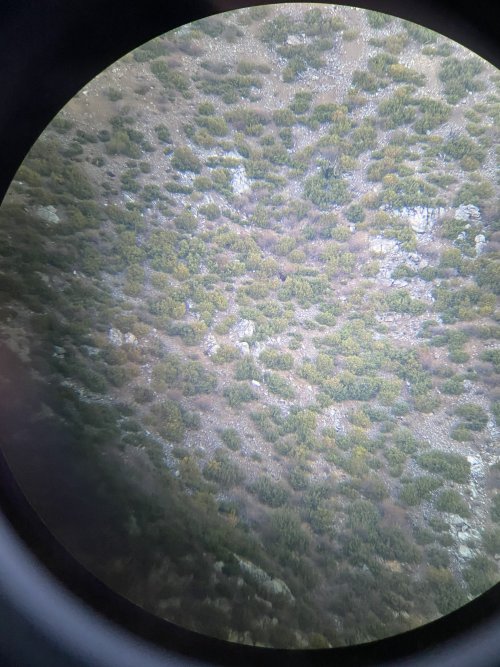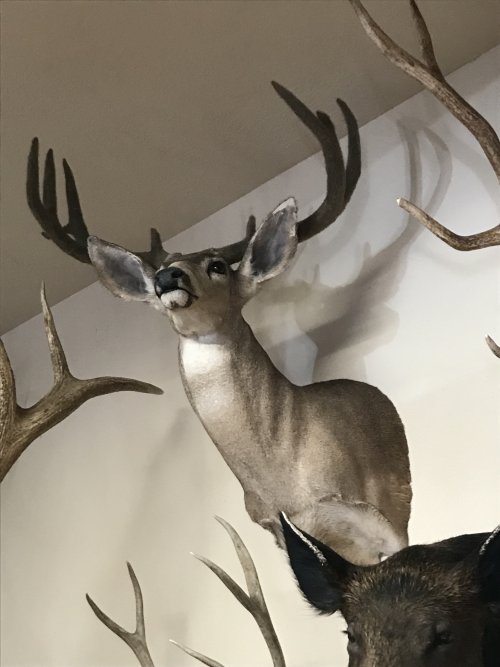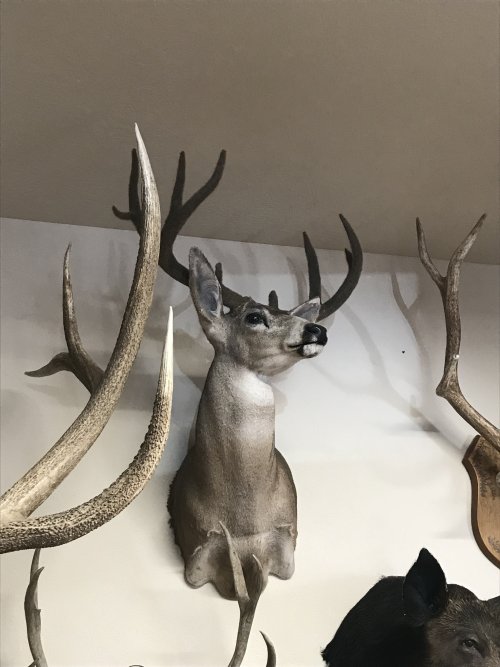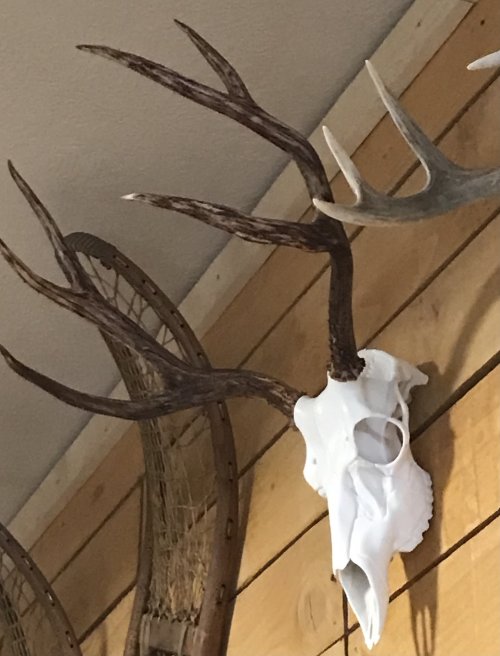sureshotshane
Active member
In the past I've been hesitant to post stories because someone inevitably accuses you of spot burning. Fact is I could give you the coordinates to my deer and bear spots and you probably won't hunt there.
I also would like to go on record and be the advocate for California hunting. We get a bad rap here. Some of it is for good reason no doubt, but California has a lot to offer the hunter for some unique species you can only find in a handful of states and there is some downright world class hunting. I've never seen a nonresident hunter in California, I'm sure they exist but not where I hunt. How many times have you seen CA plates while hunting in Idaho? Too often is my guess.
Someone has to speak for the state because they are doing a poor job of marketing. While the elk opportunities are limited we do have a generous deer season and most the state you can purchase a deer tag (or two) OTC. The cost of NR tags and licensing is on par or cheaper than other states. With blacktail deer you have to re-evaluate what a big deer is, they just don't get as big as Mule Deer. Much like how an Arizona Coues will never get as big as a Kansas Whitetail. A ton of people travel to chase Coues deer for the unique terrain and opportunity (myself included). The Columbian blacktail following is small in comparison. Most who hunt them do so because it's what is available but there are a few diehards. Maybe they aren't as popular because how difficult they are to hunt on public land.
It's worth mentioning the CA bear hunting. The bear season is long, and the quota never fills now that you can't chase them with dogs and we have some big beautiful colorphase bears. Glassing is very successful.
In this post I won't get into the other unique opportunities we have in California, namely quail, grouse, and pigeons.
We've killed and seen some big pure blacktails while hunting in CA but this is the story of an interesting Columbian Blacktail that I killed.
Myself and my good friend, Blake, were on a backcountry hunt in Northern California. We had only a few days to hunt and fog kept us from glassing the first day. On the second morning, we worked our way along a ridge glassing diligently as we went. Being late in the season, we knew the hunting would be hard as the older bucks are dead or educated and hiding in steep nasty thickets. As for bears, we expected to see them fattening up on any food source they could find. What we didn’t expect was the amount of food that would be left that late in the fall. During that afternoon, our excitement leapt and crashed as we glimpsed a bear on the move drift out of range and sight further along the ridge. That bear and any other bears or shooter bucks in the area continued to elude us.
In hopes another would appear, we glassed hard in the direction we had spotted the bear. Rather than being rewarded with the sight of black or brown fur, we spotted the blue denim of another group of hunters working their way towards us on the ridge. Only a little discouraged by the newly discovered competition, we stayed put and continued to glass. We did not want to intrude on their hunt and could tell they were thinking the same about us. Both groups behind the glass, we watched each other until they decided to slowly turn back the way they had come. Being familiar with the area, Blake and I assumed the other hunters would be camping in the saddle further down the ridge where we were planning to camp that night. It being Sunday, we also suspected they might be headed home to start the work week soon.
Our confidence in finding game was at a new low due to the presence of other hunters, we decided to slow down and spend more time behind the glass on the way to our destination, the saddle. This way we would leave the other hunters enough time to enjoy the rest of their hunt and possibly see something they may have missed.
Light was beginning to dim while we were glassing a canyon east of our position. Sitting on a prominent knob I spotted a beautiful golden-brown bear feasting on Ceonothus berries. A mile away, it was too far to make a stalk that evening. On the same canyon face, but slightly closer was another healthy-looking bear. Jet black, it stood feeding just as frantically. With daylight waning, I began to focus my optics on the areas closest to me. A third good-sized bear appeared just as shooting light faded to dark.
We camped near the glassing knob and dreamed of bears in hopes morning light would come with opportunity. Expecting the bears to hold tight and enjoy the bountiful berries, we crept out to the knob at first light. It wasn’t long after the first rays of sunlight hit the canyon that we spotted the closest black bear from the night before. Blake took the shot and his aim was true. The bear dropped and began tumbling downhill. I continued to glass as Blake went to process his bear.
Soon after, I spotted a group of bucks near where the color phase bear was spotted the night before. About a mile away from me, I knew I would need to be quick because the bucks looked like they were going to crest a finger ridge into a sea of brush to bed for the day. At that distance, I couldn’t get a good look at the bucks, but I knew one was a shooter. I practically ran.
The bucks disappeared into the folds of the land as I approached shooting distance. I continued close the distance, maneuvering into the only shooting lane I could find. The bucks were back in view about 200 yards away. I positioned my tripod for a solid rest and took aim at the biggest buck in the group. I cracked off the shot and he ran a short ways downhill before he buckled and fell. I hiked down to retrieve him, excited to get a closer look.
I found the buck and was pleasantly surprised by his impressive and unique rack especially for a Columbian Blacktail. On his left side he had four solid points. His right side totaled seven points with the beam splitting into two near its base. I've certainly seen and killed bucks that would score higher but this one was special. It was a triple beam buck, or as we call it now – the Trinity Fork.
Decent photos were hard to obtain on a grade so steep.
I also would like to go on record and be the advocate for California hunting. We get a bad rap here. Some of it is for good reason no doubt, but California has a lot to offer the hunter for some unique species you can only find in a handful of states and there is some downright world class hunting. I've never seen a nonresident hunter in California, I'm sure they exist but not where I hunt. How many times have you seen CA plates while hunting in Idaho? Too often is my guess.
Someone has to speak for the state because they are doing a poor job of marketing. While the elk opportunities are limited we do have a generous deer season and most the state you can purchase a deer tag (or two) OTC. The cost of NR tags and licensing is on par or cheaper than other states. With blacktail deer you have to re-evaluate what a big deer is, they just don't get as big as Mule Deer. Much like how an Arizona Coues will never get as big as a Kansas Whitetail. A ton of people travel to chase Coues deer for the unique terrain and opportunity (myself included). The Columbian blacktail following is small in comparison. Most who hunt them do so because it's what is available but there are a few diehards. Maybe they aren't as popular because how difficult they are to hunt on public land.
It's worth mentioning the CA bear hunting. The bear season is long, and the quota never fills now that you can't chase them with dogs and we have some big beautiful colorphase bears. Glassing is very successful.
In this post I won't get into the other unique opportunities we have in California, namely quail, grouse, and pigeons.
We've killed and seen some big pure blacktails while hunting in CA but this is the story of an interesting Columbian Blacktail that I killed.
Myself and my good friend, Blake, were on a backcountry hunt in Northern California. We had only a few days to hunt and fog kept us from glassing the first day. On the second morning, we worked our way along a ridge glassing diligently as we went. Being late in the season, we knew the hunting would be hard as the older bucks are dead or educated and hiding in steep nasty thickets. As for bears, we expected to see them fattening up on any food source they could find. What we didn’t expect was the amount of food that would be left that late in the fall. During that afternoon, our excitement leapt and crashed as we glimpsed a bear on the move drift out of range and sight further along the ridge. That bear and any other bears or shooter bucks in the area continued to elude us.
In hopes another would appear, we glassed hard in the direction we had spotted the bear. Rather than being rewarded with the sight of black or brown fur, we spotted the blue denim of another group of hunters working their way towards us on the ridge. Only a little discouraged by the newly discovered competition, we stayed put and continued to glass. We did not want to intrude on their hunt and could tell they were thinking the same about us. Both groups behind the glass, we watched each other until they decided to slowly turn back the way they had come. Being familiar with the area, Blake and I assumed the other hunters would be camping in the saddle further down the ridge where we were planning to camp that night. It being Sunday, we also suspected they might be headed home to start the work week soon.
Our confidence in finding game was at a new low due to the presence of other hunters, we decided to slow down and spend more time behind the glass on the way to our destination, the saddle. This way we would leave the other hunters enough time to enjoy the rest of their hunt and possibly see something they may have missed.
Light was beginning to dim while we were glassing a canyon east of our position. Sitting on a prominent knob I spotted a beautiful golden-brown bear feasting on Ceonothus berries. A mile away, it was too far to make a stalk that evening. On the same canyon face, but slightly closer was another healthy-looking bear. Jet black, it stood feeding just as frantically. With daylight waning, I began to focus my optics on the areas closest to me. A third good-sized bear appeared just as shooting light faded to dark.
We camped near the glassing knob and dreamed of bears in hopes morning light would come with opportunity. Expecting the bears to hold tight and enjoy the bountiful berries, we crept out to the knob at first light. It wasn’t long after the first rays of sunlight hit the canyon that we spotted the closest black bear from the night before. Blake took the shot and his aim was true. The bear dropped and began tumbling downhill. I continued to glass as Blake went to process his bear.
Soon after, I spotted a group of bucks near where the color phase bear was spotted the night before. About a mile away from me, I knew I would need to be quick because the bucks looked like they were going to crest a finger ridge into a sea of brush to bed for the day. At that distance, I couldn’t get a good look at the bucks, but I knew one was a shooter. I practically ran.
The bucks disappeared into the folds of the land as I approached shooting distance. I continued close the distance, maneuvering into the only shooting lane I could find. The bucks were back in view about 200 yards away. I positioned my tripod for a solid rest and took aim at the biggest buck in the group. I cracked off the shot and he ran a short ways downhill before he buckled and fell. I hiked down to retrieve him, excited to get a closer look.
I found the buck and was pleasantly surprised by his impressive and unique rack especially for a Columbian Blacktail. On his left side he had four solid points. His right side totaled seven points with the beam splitting into two near its base. I've certainly seen and killed bucks that would score higher but this one was special. It was a triple beam buck, or as we call it now – the Trinity Fork.
Decent photos were hard to obtain on a grade so steep.




